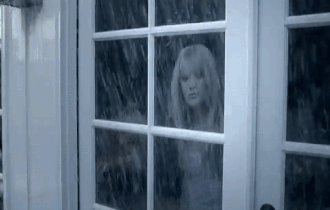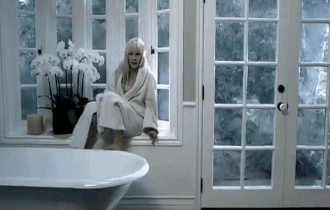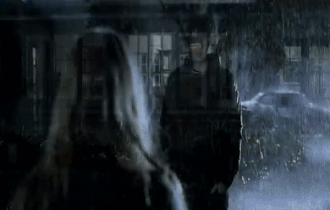Released: 12th April 2004
Writers: Kara DioGuardi / John Shanks
Peak position: #18
Chart run: 18-28-36-45
Billboard Hot 100 chart run: 53-47-41-41-35-37-43-45-52-65-77-87-98
As bubblegum pop fell out of favour in the early ‘00s, pop-rock emerged in its place as the more acceptably credible alternative. For some acts, this formed an integral part of their identity and for others, it merely necessitated what their material needed to sound like in order to stand a chance of being successful. Hilary Duff‘s early career as a singer felt like it feel into the latter camp; her musical profile completely being dictated by what would sell. Certainly, it seemed fairly unlikely that she’d ever been within 50 feet of a real guitar.

Indeed, Hilary Duff‘s whole existence as a pop star was always a bit of a weird concept, certainly in her formative years. The featherweight vocals and lack of stage presence may have led some to question her credentials as a recording artist, but more unorthodox than that, however, was her apparent lack of insight into what she was doing. Hilary Duff‘s motto on entering the music industry was: “I don’t know if I can sing, but I can try”. That endearing ineptitude was largely consistent with the way in which she talked up her music, describing Come Clean, for example as: “Not really pop. It sounds sort of like techno, but it’s slow”.

Maybe something was lost in the mixing from when the song was recorded, but Come Clean as it eventually sounded was very pop, not remotely techno, definitely not slow, and all the better for it. While the majority of the Metamorphosis album treads down the pop-rock line, Come Clean offers up something sonically much more interesting. In stark contrast to Hilary Duff’s smiley, sunny persona, this is a moodier affair that primarily mixes elements of pop and electro, throwing in a bit of rock for good measure. The production on the track is absolutely divine, with choppy synths laying the foundation and a high-pitched electronic melody running throughout the song. It’s further complemented by guitar riffs and barely audible spoken vocals, all distorted to create a really rich and constantly evolving instrumental. It’s an unfortunate, yet inevitable by-product of the time that the more interesting aspects of the production are often masked by generic electric guitar fuzz, but sensibly Come Clean never completely loses sight of what it wants to be.

Given Hilary Duff often felt like a passenger in her own music career at this stage, she could so easily have been the weak link here. But conversely, it’s one of her best performances, even if that’s largely unintentional. The production on the track is so torrid that it throws her voice around like an empty crisp pack floating on the breeze. That works well, giving a sense of her struggling to stay in control of the song and at times almost getting lost in the melodrama. There are moments during the second verse where the electric guitar melody almost drowns Hilary Duff out completely, but it really sells the struggle that Come Clean is conveying. That’s best realised midway through the second verse, and the relative desperation with which she searches for the melody: “Trying to find a pigment of truth beneath my skin, UH-UH-UH-OH”. This is most certainly not a singer’s song and employing someone ill-equipped to deliver any more than is minimally necessary ensures delicate homeostasis is maintained throughout.

Lyrically, Come Clean is smartly written; the opening: “Let’s go back, back to the beginning, back to when the earth, the sun, the stars all aligned” is a genius moment of chin-stroking pop lyricism. And while the song doesn’t maintain that level of profundity, there are some brilliantly obtuse moments scattered throughout, like: “’Cos different doesn’t feel so different, and going out is better than always staying in”. Again, it sets Come Clean apart from the rest of Metamorphosis as trying to do something a little different and less formulaic than first appearances of the album suggested.

The downcast atmosphere is perfectly realised within the music video as a very literal reading of the lyrics. Set amidst of a torrential downpour and largely utilising a dreary black, white and grey palette, the washed-out visuals again help to distance Hilary Duff from her Lizzie McGuire origins without feeling particularly forced. However, the postmodern transition shots between Hilary Duff performing in the rain and then watching herself on television performing in the rain remain on-brand. It’s easy to forget that Metamorphosis was Hollywood Records’ first major foray into the charts and although Hilary Duff’s music was a separate entity from her role as Lizzie McGuire, a lot of the album success was built around her synergy as a Disney brand. The Come Clean visual treatment thus deftly straddles a line somewhere between the Disney Channel and MTV without elements that would appeal to both without alienating the other.

Despite Come Clean’s superior pop sensibilities, its chart fortunes were disappointingly mixed. A #35 peak on the Billboard Hot 100 was a fairly big achievement in such pop-hostile times; it also marked Hilary Duff’s first top 40 hit in America. However, in the UK the response was much cooler and the single peaked at #18, which is a real shame because it’s still commonly cited by most pop observers as one of her best efforts. Still, undeterred by the lukewarm response to only her second single, Hilary Duff retreated from our shores and plotted a comeback the following year with the obvious next move: a greatest hits album.



